3D printing overlays materials through digital models and directly transforms virtual designs into real objects, completely overturning the limitations of traditional manufacturing's reliance on moulds and cutting techniques. Not only can the technology create complex geometric structures, it also empowers businesses to quickly respond to market demand through a flexible ecosystem of 3D printing services ——from lightweight parts customization in the aerospace industry to personalized implant production in the medical industry to rapid prototyping of entire construction industry structures.
3D printing is reshaping global manufacturing landscape with its efficiency and low consumption. Whether start-ups or industry giant, by uploading design documents, JS companies can turn imaginative ideas into tangible products using an advanced network of printing service and truly usher in a new era of think what you want manufacturing.
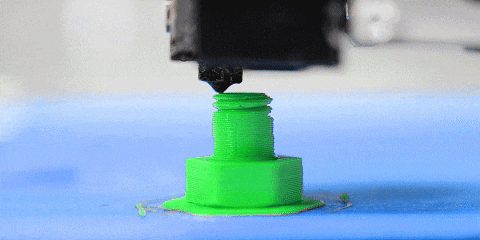
What is 3D printing?
3dPrinting is a technique of layering materials through digital models to manufacture entities directly, revolutionizing traditional manufacturing patterns that rely on molds and cutting techniques. In the field of manufacturing, decentralized production enables enterprises to quickly produce customized components without the need for large-scale molds, greatly reducing development costs and time. In the aerospace industry, for example, 3D printed model are used to optimize lightweight structural designs and reduce material waste by up to 60%. At the design level, designers can break through traditional geometric constraints, free to create complex internal structures, hollow structures and even biomimetic forms, greatly unleashing the potential for innovation. Consumers can also customize personalized products such as exclusive accessories or body-friendly medical devices through online 3D printing service.
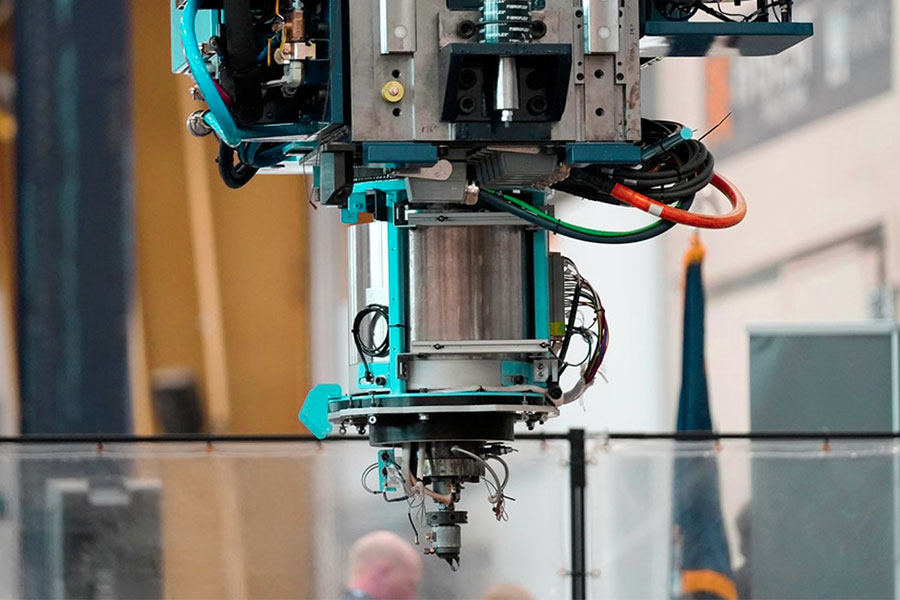
For which specific industries was 3D printing technology first developed?
3D printing originated in Rapid prototyping in the 1980s and initially provided solutions for high-precision industries such as aerospace, car manufacturing and healthcare. These industries require rapid validation of complex designs, but traditional mold manufacturing is costly and time-consuming, leading to the advent of 3D printing.
Core features of early industrial-grade equipment
1.Highly specialized application scenarios
- Aerospace: Used to manufacture prototypes of lightweight titanium alloy engine components with complex internal structures that traditional foundry cannot achieve.
- Medical field: Early trials of custom orthopedic implants,such as hip joints, require patient-specific models based on CT scan data.
- Automotive development: Fast iterative component prototypes (such as intake manifolds) to shorten the development cycle of new vehicles.
2.Technical constraints and high costs
- Early equipment, using stereolithography(SLA) or selective laser sintering(SLS) technology, cost more than millions of dollars and was affordable only for large enterprises or research institutes.
- Materials are limited to expensive materials such as photosensitive resins and metal powders, and printing accuracy is limited by device resolution (±0.1mm in the early days).
- Reliance on professional engineers makes it difficult for the average user to reach.
Innovations and Differences in consumer grade printers Today
1.Democratization of technology and scene expansion
- Desktop FDM printers such as Ultimaker and Creativity have dropped to thousands of dollars, allowing individual enthusiasts to print small plastic models such as toys and decorations.
- The open-source community drives innovation, allowing users to download 3D printing models through online platforms such as Thingiverse and modify and print them themselves.
2.Diversification of materials and functions
- Consumer-grade devices support inexpensive materials like PLA, ABS and PETG, and some high-end products are even compatible with wood and ceramic composite consumables.
- The application scene extends to custom furniture, teaching models and fashion.
3.The universalization of 3D printing services
- In the early days, industrial-level services were available only to corporate clients. Individuals can now upload 3D-printing models via online platforms and commission them from specialist factories at a lower cost.
- The range of services has expanded to include rapid prototyping, small-scale production and restorative manufacturing (e.g. replica antique parts).
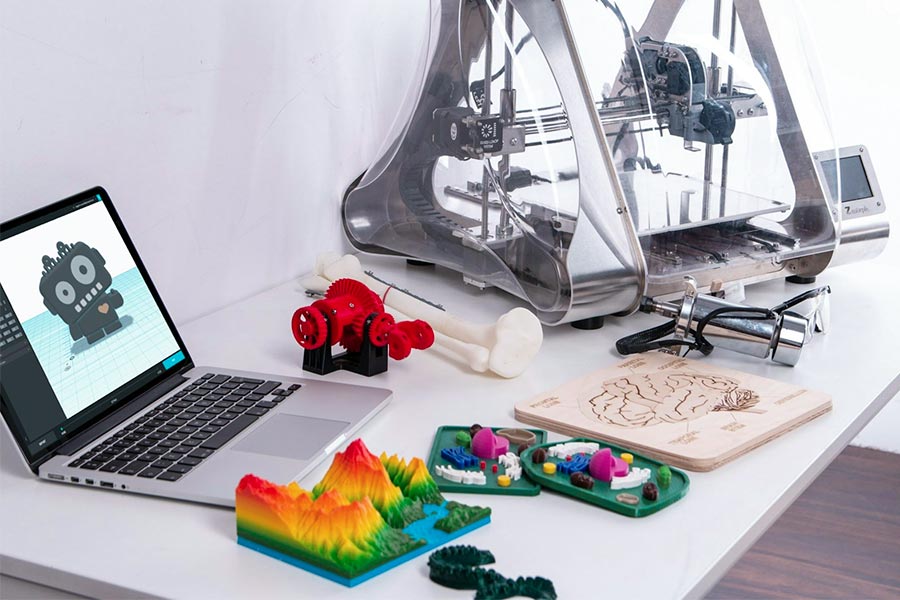
Simply put, how does 3D printing work?
1.Design Digital Models
Create 3D models using CAD software such as SolidWorks, or download off-the-shelf 3D printing models from online platforms such as Thingiverse. Models need to be saved in common formats such as STL and OBJ.
2.Slice processing
Import the model into slicing software (such as Cura), set print parameters (layer height, fill density, support structure, etc.), and generate a G-code command file that the printer can recognize.
3.3D Printing Service Options
Upload your 3D model files to a professional 3D printing platform or contact your service provider directly to meet your needs. The system will provide one-stop solutions based on model characteristics, intelligent recommendations for suitable materials (e.g. engineering plastics, metal alloys, photosensitive resins, etc.) and optimal molding processes (covering mainstream technologies such as FDM, SLA, SLS, etc.).
4.Precision printing stage
Service providers layered by industrial-grade equipment:
- FDM(Fused Deposition Modeling): Thermoplastic materials is extrusion layer by layer, economical and effective, suitable for rapid prototyping verification.
- SLA(Stereolithography): UV curing liquid resin achieves micrometer level precision, smooth surface and meets jewelry, dental and other details.
- SLS(Selective Laser Sintering): The use of Laser precision sintering nylon/metal powder to produce high strength and complex terminal parts.
5.Post processing and delivery assurance
Printed products support global logistics distribution or local self-collection through automated support, manual finishing (polishing/spraying), quality inspection and other processes. The whole process uses digital tracking system to ensure that the delivery cycle and the state of finished product status are transparent and controllable.
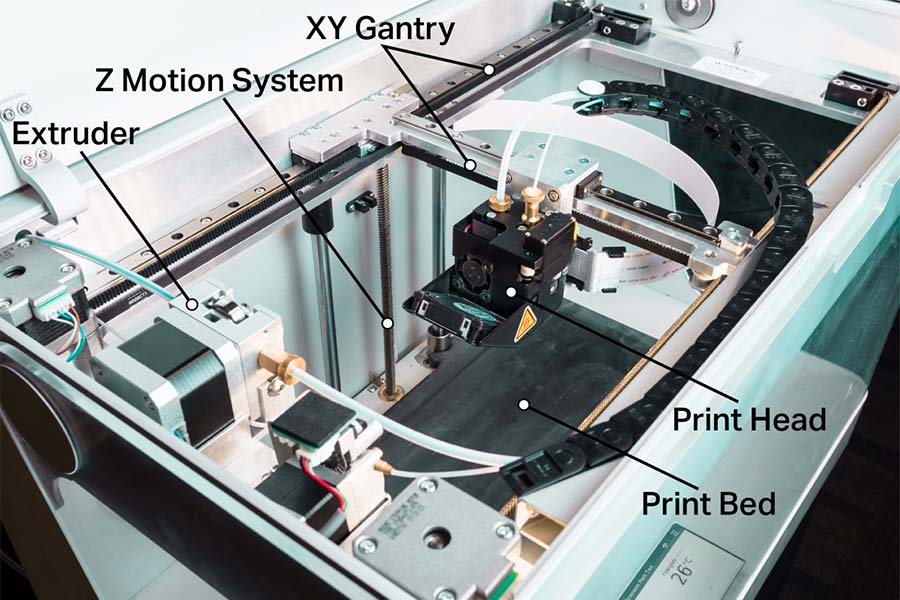
How to combine ink jet and 3D printing?
The combination of ink jet printing and 3D printing is mainly achieved by inkjet printing. At its core, liquid materials (such as resin, ceramic pulp, conductive ink, etc.) are sprayed and solidified layer by layer to form a three-dimensional structure by micrometer level nozzles. Specific combinations include:
1.Material direct writing molding: Using Ink Jet printing technology, high viscosity materials are accurately sprayed, layered into complex geometric shapes, suitable for rapid prototyping and small batch customization.
2.Functional surface manufacturing: Spray functional ink (such as conductive silver paste, bioink) on substrate surface to directly construct electronic circuits or tissue scaffolds.
3.Multi material hybrid printing: Through the multi-nozzle system, different materials (such as plastics, ceramics, etc.) are sprayed synchronously to achieve the integral molding of composite parts.
How do the layer thicknesses of different printing techniques affect the final surface roughness and strength?
The layered thickness of different 3D printing techniques has an important effect on the surface roughness and mechanical strength of the final parts. The following is a comparative analysis of three major techniques: FDM, SLA and SLS:
1.The influence of layer thickness on surface roughness
The surface roughness (Ra value) is mainly determined by the interlayer step effect. The smaller the layer thickness, the less obvious the steps, and the smoother the surface.
| Technique | Typical layer thickness range | Comparison of Surface Roughness (Ra) |
| FDM | 0.1–0.4 mm | FDM 0.1mm layer thickness: Ra≈ 15–30μm |
| SLA | 25–100 μm | SLA 25μm layer thickness: Ra≈ 2–5μm |
| SLS | 0.05–0.3 mm | SLS 0.1mm layer thickness: Ra≈10–20μm |
Experimental cases
FDM vs SLA:
- The FDM-printed cube surface (0.1mm layer thickness) was clearly layered with a Ra value of about 25μm.
- SLA printed the same model (25μm thick) with a smooth surface and Ra values below 5 μm.
SLS:
- When layer thickness is 0.05mm, Ra ≤8μm, but printing time increased by 50%.
- When the layer thickness is 0.3mm, the caustic effect was 25μm, but the efficiency has greatly improved.
2.Effect of layer thickness on mechanical strength
Layer thickness not only influences surface quality, but also indirectly determines the bearing capacity of parts through interlayer bonding strength and internal defects.
| Technique | Relationship between layer thickness and strength |
| FDM | Increase in layer thickness (e.g. 0.4mm) →decrease in interlayer bonding force →decrease in tensile strength by about 30%. |
| SLA | Reduce layer thickness (e.g. 25μm to 50μm) →reduce residual stress →increase bending strength by 15-20%. |
| SLS | Thin layer thickness (<0.1mm) →incomplete sintering of powder →increased porosity →decreased strength. |
experimental data
FDM (PLA material):
- 0.1 mm layer thickness: tensile strength ≈35 MPa.
- 0.3mm layer thickness: Tensile strength ≈25 MPa (decreased by 28%).
SLA (resin material):
- 25 μm layer thickness: flexural strength ≈85 MPa.
- 100 μm layer thickness: flexural strength ≈70 MPa (decreased by 18%).
SLS (Nylon Material):
- 0.1 mm layer thickness: compressive strength ≈50 MPa.
- 0.3mm layer thickness: compressive strength ≈45 MPa (decreased by 10%).
Brief overview
- Surface roughness: SLA>SLS>FDM (under the same layer thickness).
- Strength optimization: SLA reduces stress concentration through thin layers, while FDM needs to avoid bond weakening caused by too thick layers.
- Practical advice:
Precision requirements (e.g. jewelry, medical models): SLA layer thickness ≤50μm preferred.
High strength requirements (e.g. functional parts): Choose the thickness of the equilibrium layer (0.1-0.2mm) in SLS or FDM.
Rapid molding: FDM may increase the layer thickness (0.2-0.3mm) as appropriate.
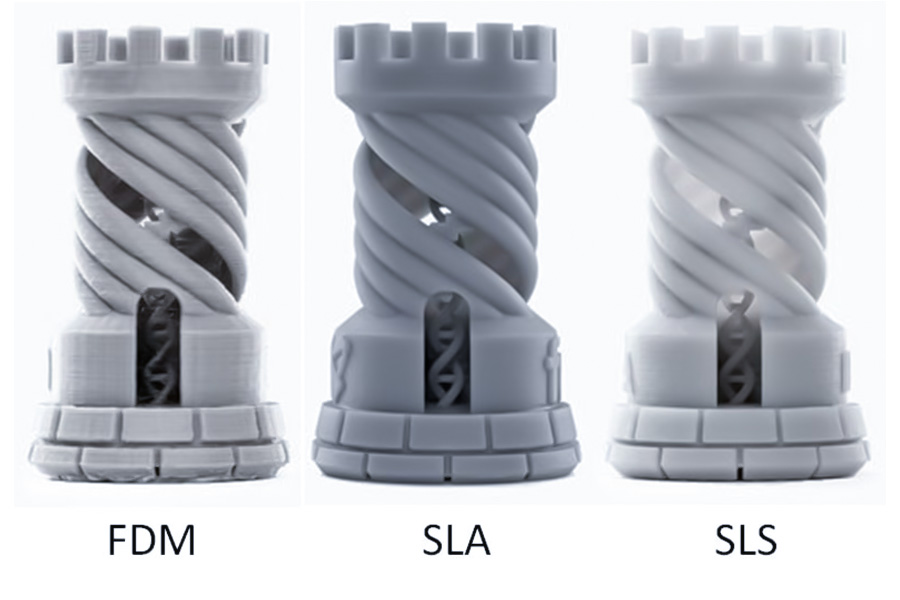
Why use 3D printing?
1.Customization
The digital modeling and layered superposition characteristic of 3D printing enables complex geometric shapes to be manufactured without mould or large upfront investment, completely satisfying the need for individualization.
Technical support:
- SLA (Stereolithography): Highprecision detail (such as jewelry molds, hearing aids) capable of printing errors of less than 50 μm.
- Multi material spraying: Supports color and material mixing for customized consumer goods (phones, toys).
Case in point: JS uses SLA technology to assist dental clinics print personalized orthodontic appliances based on patient dental data.
2.Sustainability of 3D Printing
3D printing consumes only the materials needed and reduces waste generation compared to traditional subtractive manufacturing, such as cutting, and is therefore particularly suitable for expensive materials such as titanium alloys and carbon fiber composites.
Data comparison:
- Traditional process: aviation aluminum cutting waste rate of as high as 70%.
- 3D printing: The powder is reusable and has a waste rate of less than 10%.
Case in point: JS provides lightweight structural components for drone manufacturers with 50% increase in material utilization.
3.Speed advantage
3D printing eliminates need for mold development and multi-process coordination, greatly shortens the product development cycle, and is especially suitable for rapid prototyping and small batch production.
Technology efficiency comparison:
| Technique | Prototype production time (complex gearbox) | Applicable scenarios |
| Traditional Casting | 2-4 weeks (including mold making) | Large number, standard pieces. |
| FDM | 12-24 hours | Rapid validation of design feasibility. |
| SLA | 6-8 hours (high precision) | Functional prototypes, transparent components. |
What are the advantages of JS's 3D printing technology?
Unlike traditional printing shops, JS offers differentiated solutions with industrial-grade equipment and expertise:
1.Ultra-high precision and complex structure
Support ±0.005mm tolerances, well above industry standards, for manufacturing precision parts (e.g. medical devices, aerospace components, etc.). Dealing with complex geometric shapes without pressure, hollow structures, irregular surfaces and other designs can be achieved without the need for molds.
2.Material diversity
We offer more than 50 material options covering metals (aluminum, titanium, stainless steel), engineering plastics (PEEK), biocompatible materials, and more to meet the needs of automotive, electronics, and healthcare industries.
3.Efficient production and quick delivery
- With automated production lines and intelligent scheduling systems, 98% of orders were delivered on time and the average project cycle was 15% shorter.
- Support seamless transition between small small batch customization (such as single piece trials) and mass production.
4.Cost optimization
- Algorithm optimization of material utilization can reduce waste and overall cost by 20%.
- Design review services are provided free of charge to avoid pre-printing defects and reduce rework costs.
5.Sustainable manufacturing
By using environmentally friendly materials and energy-efficient equipment, carbon emissions reduced by 15% and waste recycling rate up to 20%, in line with the trend towards green manufacturing.
Summary
3D printing redefines manufacturing possibilities by converting digital models into physical objects. Whether through layered stacking by FDM, precise solidification by SLA, or powdery fusion by SLS, 3D printing has been driving industries to break through traditional limitations with its agile design, high resource utilization, and fast iteration.
With the help of 3D printing service, the manufacture of complex structures is within reach, from personalized medical implants to rapid prototyping of lightweight aerospace components. As technology spreads and service ecology improves, 3D printing not only lowers the innovation threshold, but also shifts customization production from niche needs to large-scale applications.
Disclaimer
The content of this page is for informational purposes only.JS SeriesNo representations or warranties of any kind, express or implied, are made as to the accuracy, completeness or validity of the information. It should not be inferred that the performance parameters, geometric tolerances, specific design features,material quality and type or workmanship that the third-party supplier or manufacturer will provide through the jusheng network. This is the responsibility of the buyerAsk for a quote for partsto determine the specific requirements for these parts.please Contact us Learn more information.
JS Team
JS is an industry-leading companyFocus on custom manufacturing solutions. With over 20 years of experience serving more than 5,000 customers,we focus on high precisionCNC machining,Sheet metal fabrication,3D printing,Injection molding,metal stamping,and other one-stop manufacturing services.
Our factory is equipped with more than 100 state-of-the-art 5-axis machining centers and is ISO 9001:2015 certified. We provide fast, efficient and high-quality manufacturing solutions to customers in more than 150 countries around the world. Whether it's low-volume production or mass customization, we can meet your needs with the fastest delivery within 24 hours. chooseJS TechnologyIt means choosing efficiency, quality and professionalism.
To learn more, please visit our website:jsrpm.com
FAQs
1.Why do some 3D printed models require support structures?
In 3D printing, if the model has a suspension or a tilt angle too high (for example, more than 45°), the material can easily collapse under gravity as it piles on top of each other. The supporting structure serves as a temporary framework to support the suspension section, ensuring accuracy and completeness of printing.
2.Why is industrial-grade printing more expensive than desktop printing?
The high cost of industrial printing is due to higher requirements for materials such as titanium alloys and engineering plastics, maintenance of precision equipment such as laser calibration and high temperature systems, and technical support costs. At the same time, high accuracy, stability and mass production efficiency must be ensured, while desktop printing focuses on low cost and ease of use.
3.What's the difference between metal 3D printing and plastic printing?
Metal printing requires high-temperature molten powder (such as SLS), which makes the the finished product stronger, but the equipment is expensive and mainly used in high-end areas such as aerospace and medical implants. Plastic printing is formed by molten deposition or photosynthesis. It is low-cost, simple to operate, suitable for prototypes and everyday products, and lightweight and economical.
4.What are the key steps in 3D printing reprocessing?
Post-processing for 3D printing involves removal of support structures, surface polishing to remove layer marks, heat treatment to enhance strength, and beautification steps such as surface spraying or polishing to ensure the the finished product is smooth, durable, and meets design requirements.






